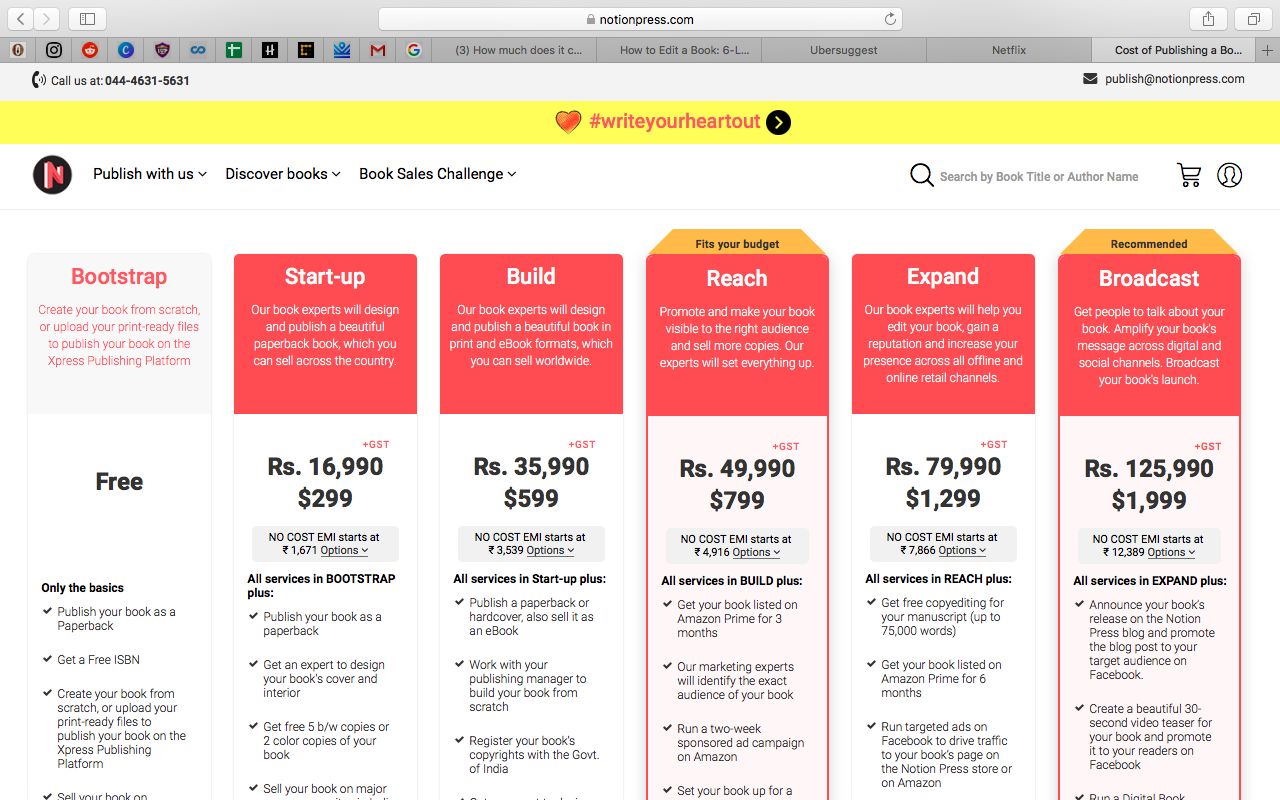Introduction
Welcome to the world of digital books! With the rising popularity of e-readers and mobile devices, publishing an eBook has become a feasible option for many aspiring authors. Gone are the days when traditional publishing was the only route to take. Today, self-publishing has opened up a world of possibilities, giving authors full control over their work and the potential for higher royalties.
But before you jump headfirst into the eBook publishing process, it’s important to understand the various costs involved. From writing and editing to formatting, cover design, and marketing, each step requires careful consideration and financial planning.
In this article, we’ll explore the key expenses you need to consider when publishing an eBook. By understanding these costs, you can make informed decisions and ensure a successful venture into the world of self-publishing or traditional publishing.
Whether you’re an aspiring author or an experienced writer, it’s important to weigh the financial aspects carefully. Remember, the goal is not just to publish a book, but to create a professional and captivating reading experience for your audience.
Now, let’s dive into the different costs associated with publishing an eBook, starting with the writing and editing phase.
Writing and Editing Costs
Before your eBook can make its way into the hands of readers, it must first be written and polished to perfection. This stage involves not only the creative process of writing but also the meticulous task of editing to ensure your content is error-free and engaging.
The cost of writing and editing will vary depending on the length and complexity of your eBook, as well as the experience and expertise of the professionals you choose to work with. There are a few options to consider:
1. Self-Writing and Self-Editing: If you have excellent writing skills and a keen eye for detail, you may choose to write and edit your eBook yourself. This option eliminates the cost of hiring professionals but requires a significant investment of your time and effort. Keep in mind that even with self-editing, it’s beneficial to have a fresh set of eyes review your work.
2. Hiring a Ghostwriter: If you have a concept or idea but lack the time or writing skills to bring it to life, you can hire a ghostwriter. Ghostwriters are professional writers who will work closely with you to understand your vision and create a manuscript on your behalf. The cost of hiring a ghostwriter will depend on factors such as their experience, reputation, and the length of your eBook.
3. Hiring an Editor: Once your manuscript is complete, it’s crucial to hire an editor to polish your work and make it shine. Editors play a vital role in improving the structure, grammar, spelling, and overall readability of your eBook. The cost of an editor can vary, depending on their expertise and the level of editing required.
Remember, investing in quality writing and editing is crucial for the success of your eBook. A well-written and professionally edited book will not only attract readers but also enhance your reputation as an author.
Next, let’s explore the costs associated with formatting and designing your eBook.
Formatting and Design Costs
Once your eBook has been written and edited, it’s time to give it a professional and visually appealing look. Formatting and design play a crucial role in creating an engaging reading experience for your audience.
The cost of formatting and design will depend on various factors, such as the complexity of your eBook’s layout, the number of images or illustrations included, and whether you choose to hire a professional designer or use DIY tools. Here are a few options to consider:
1. DIY Formatting: If you have the technical skills, you can choose to format your eBook yourself using available tools like Kindle Create, which provides pre-made templates for easy formatting. Keep in mind that while this option may be more cost-effective, it requires time and a learning curve to ensure a professional result.
2. Hiring a Professional Formatter: If you prefer a polished and seamless eBook layout, consider hiring a professional formatter. They specialize in eBook formatting and will ensure that your eBook is compatible with various e-readers and devices. The cost will vary depending on the length and complexity of your eBook.
3. Book Cover Design: Your eBook cover is the first thing readers see, so investing in a high-quality design is essential. You have the option of designing the cover yourself, hiring a freelance designer, or working with a design agency. Costs can range from a few hundred to several thousand dollars, depending on the level of customization and expertise required.
Remember, a well-designed and formatted eBook not only adds credibility but also enhances the reader’s experience. It can make the difference between capturing their attention or losing them before they even begin reading.
Now that your eBook is polished and visually appealing, let’s delve into the costs associated with cover design.
Cover Design Costs
When judging a book, we often say, “Don’t judge a book by its cover.” But let’s face it, a captivating and professionally designed cover can make a significant difference in attracting potential readers to your eBook.
The cost of cover design will depend on the level of customization, the experience and reputation of the designer, and whether you choose to work with a freelance designer or a design agency. Here are a few options to consider:
1. DIY Cover Design: If you have design skills and access to graphic design software, you can create your eBook cover yourself. However, keep in mind that designing an eye-catching cover requires a combination of artistic talent and an understanding of visual marketing principles.
2. Hiring a Freelance Designer: If you want a professional and unique cover design tailored to your eBook, you can hire a freelance designer. Platforms like Upwork and Fiverr connect you with talented designers who can bring your vision to life. Costs can vary depending on the complexity of the design and the designer’s experience.
3. Working with a Design Agency: If you have a larger budget and want the support of a team of designers, you can choose to work with a design agency. They will guide you through the design process and create a highly customized and visually stunning cover for your eBook. The cost will depend on the agency’s reputation, expertise, and the level of customization you require.
Remember, your eBook cover is the first impression readers get of your work. A professionally designed cover not only grabs attention but also conveys the genre, tone, and overall theme of your eBook. It’s an investment that can significantly impact the success of your eBook.
Now that your eBook has a captivating cover, it’s time to navigate the costs associated with obtaining an ISBN and copyright.
ISBN and Copyright Costs
Securing an ISBN (International Standard Book Number) and copyright protection are essential steps in the eBook publishing process. These ensure that your eBook is properly identified and legally protected. While these costs may not be directly related to the production or design of your eBook, they are crucial for establishing credibility and protecting your intellectual property.
Let’s explore the costs associated with obtaining an ISBN and copyright protection:
1. ISBN Registration: An ISBN is a unique identifier for a specific publication format. It’s used by libraries, booksellers, and distributors to track and identify books. Depending on your country, ISBNs may be purchased individually or in bulk. The cost of an ISBN can vary, so it’s recommended to check with the official ISBN agency in your region for accurate pricing.
2. Copyright Registration: While copyright protection is automatic when you create original work, registering your eBook with the copyright office provides additional legal protections. The cost of copyright registration will depend on your jurisdiction. In the United States, for example, there is a fee associated with filing for copyright, which can be done online through the U.S. Copyright Office.
Securing an ISBN and copyright protection ensures that your eBook is properly registered, making it easier to distribute and sell your work legally. While these costs may seem like administrative requirements, they are crucial for maintaining control over your intellectual property.
Now that your eBook is properly identified and protected, let’s explore the costs associated with distributing your eBook to readers.
Distribution Costs
Once your eBook is ready to be shared with the world, you’ll need to consider the costs associated with distributing it to readers. The availability and visibility of your eBook across various platforms and online marketplaces can greatly impact its success. Let’s explore the different distribution options and the costs associated with each:
1. Self-Publishing Platforms: Self-publishing platforms like Amazon Kindle Direct Publishing (KDP), Smashwords, and Kobo Writing Life allow you to upload and distribute your eBook directly to their platforms. These platforms typically offer free distribution options, taking a percentage of your royalties instead. Keep in mind that there may be additional fees if you opt for premium services like enhanced distribution or marketing tools.
2. Agregator Services: Aggregator services like Draft2Digital and Smashwords provide distribution to multiple eBook retailers and platforms in one go. They simplify the distribution process, ensuring your eBook is available on various platforms such as Barnes & Noble, Apple Books, and Google Play. These aggregator services typically charge a percentage of your royalties or a distribution fee.
3. Traditional Publishing: If you choose the traditional publishing route, the distribution costs are typically covered by the publishing house. However, keep in mind that securing a traditional publishing deal often involves giving up a portion of your royalties and may require you to go through an agent or publishing submission process.
It’s important to weigh the pros and cons of each distribution option and consider your budget and goals. Self-publishing platforms offer more control and higher royalties, but require more hands-on marketing efforts. Aggregator services provide wider distribution but may limit your control over pricing and promotions. Traditional publishing offers the support of a well-established publishing house but comes with its own set of trade-offs.
Now that your eBook is available to readers, let’s explore the costs associated with marketing your eBook effectively.
Marketing Costs
Marketing plays a crucial role in getting your eBook noticed by potential readers. Without effective marketing efforts, even the most well-written and beautifully designed eBook may struggle to reach its target audience. Let’s explore the various marketing costs you may encounter when promoting your eBook:
1. Book Promotion Websites: Book promotion websites like BookBub and Bargain Booksy offer targeted advertising and promotion opportunities to help boost your eBook’s visibility. These websites typically offer various promotional packages at different price points, depending on the genre and the reach you desire.
2. Author Website and Online Presence: Building an author website and establishing a strong online presence are key components of eBook marketing. You may need to invest in website design, domain registration, hosting fees, and possibly professional assistance in creating and maintaining your website. Additionally, consider the costs associated with social media marketing, email marketing, and online advertising to promote your eBook.
3. Book Launch Events: Organizing a book launch event, either in person or online, can help create buzz around your eBook. Costs associated with book launch events may include venue rentals, promotional materials, book signings, and other promotional activities.
4. Paid Advertising: Advertising your eBook through various channels like social media, search engines, or online bookstores can help increase its visibility. Paid advertising costs can vary widely depending on the platform, audience targeting, and duration of the campaign.
5. Collaborations and Cross-Promotion: Collaborating with other authors, bloggers, or influencers in your genre can help expand your reach and attract a wider audience. While collaborations may not involve direct financial costs, they may require time, effort, or incentives to form mutually beneficial partnerships.
Remember, effective marketing requires a combination of strategic planning, targeted advertising, and consistent engagement with your audience. It’s important to set a budget for marketing activities and prioritize the strategies that align with your target audience and goals.
Now that we’ve explored the various marketing costs, let’s discuss the differences between self-publishing platforms and traditional publishing in terms of costs.
Self-Publishing Platforms
Self-publishing platforms have revolutionized the publishing industry, offering authors the opportunity to bring their eBooks to market without the need for a traditional publishing house. These platforms provide a range of services and benefits for authors, along with the ability to maintain control over their work and earn higher royalties.
Let’s explore the advantages and costs associated with self-publishing platforms:
1. Control and Creative Freedom: One of the biggest advantages of self-publishing platforms is the control authors have over their eBooks. You have the freedom to select your book’s title, cover design, pricing, and distribution options. You can also make updates or changes to your eBook whenever you choose.
2. Royalties and Earnings: Self-publishing platforms typically offer higher royalty rates compared to traditional publishing. Authors can earn a significant percentage of their eBook’s sales, ranging from 35% to 70%, depending on factors like pricing, distribution options, and platform-specific terms.
3. Easy Publishing Process: Self-publishing platforms have streamlined the eBook publishing process, making it accessible to authors of all levels of experience. Uploading your eBook to these platforms is relatively easy, with step-by-step instructions and tools to help format and publish your eBook successfully.
4. Wide Distribution: Self-publishing platforms provide access to a wide range of online marketplaces and e-bookstores, ensuring your eBook is available to a global audience. Platforms like Amazon Kindle Direct Publishing (KDP) and Smashwords offer extensive distribution networks, reaching potential readers on various e-readers and devices.
While self-publishing platforms offer numerous advantages, it’s essential to consider the costs associated with using these platforms. Costs can vary depending on the platform and services you choose:
1. Platform Fees: Some self-publishing platforms charge a fee for various services, such as distribution, enhanced marketing options, or access to advanced analytics. These fees can be one-time or recurring, so it’s important to carefully review the pricing and features of each platform.
2. Professional Services: While not required, you may choose to invest in additional professional services like editing, cover design, or formatting to ensure the highest quality for your eBook. The costs of these services will depend on your specific needs and the professionals you choose to hire.
Overall, self-publishing platforms offer authors a cost-effective and efficient way to publish and distribute their eBooks. They provide the tools and resources needed to succeed in the competitive digital book market.
Next, let’s compare the costs associated with self-publishing platforms to traditional publishing.
Traditional Publishing Costs
While self-publishing has gained popularity, traditional publishing still holds its allure for many authors. Traditional publishing involves working with a publishing house that takes care of various aspects of the publishing process, including editing, cover design, distribution, and marketing. However, it’s important to note that traditional publishing comes with its own set of costs and considerations.
Let’s explore the costs associated with traditional publishing:
1. Agent Fees: Most traditional publishers require authors to work with a literary agent who acts as a representative and negotiates on their behalf. Literary agents typically charge a commission, usually around 15% of the author’s earnings from the book deal.
2. Advance: In traditional publishing, authors may receive an advance against future royalties. This advance is a sum of money paid upfront by the publisher to the author, which is later offset against the royalties earned from book sales. The amount of the advance varies widely and depends on factors such as the author’s track record, the book’s marketability, and the publisher’s expectations.
3. Editing and Production: In traditional publishing, the editorial process is typically handled by the publisher. This includes developmental editing, copyediting, and proofreading. The publisher also covers the costs of cover design, interior formatting, and other production expenses.
4. Marketing and Promotion: While traditional publishers offer marketing and promotion support, authors are often expected to actively participate in the marketing efforts of their book. Costs related to marketing, such as book launch events, author tours, and promotional materials, may be partially covered by the publisher, but authors may also need to invest their time, effort, and sometimes money into marketing activities.
5. Distribution: Traditional publishers have established distribution networks, which means they handle the distribution of the book to various retailers, bookstores, and online platforms. The costs associated with distribution, including printing, shipping, and warehousing, are typically covered by the publisher.
While traditional publishing can offer broader market reach and support from experienced professionals, it’s important to carefully consider the financial implications and potential limitations. Traditional publishing often involves a longer timeline, sharing royalties with the publisher, and less control over the creative and marketing aspects of the book.
Now that we’ve explored the costs associated with self-publishing platforms and traditional publishing, let’s dive into the topic of royalties and earnings.
Royalties and Earnings
When it comes to publishing an eBook, understanding the potential royalties and earnings is of utmost importance. Ultimately, the goal is not just to share your creative work with readers but also to generate income from your efforts. Let’s explore how royalties and earnings are determined in both self-publishing and traditional publishing.
Self-Publishing: In self-publishing, authors have the potential to earn higher royalties compared to traditional publishing. Self-publishing platforms typically offer royalty rates ranging from 35% to 70%, depending on factors such as pricing, distribution, and platform-specific terms. Authors have more control over pricing decisions, but it’s crucial to consider factors like market demand and competitiveness when setting a price for your eBook. Keep in mind that self-publishing royalties are usually based on the net sales price, excluding any retailer fees or delivery costs.
Traditional Publishing: In traditional publishing, royalty rates are typically lower than those in self-publishing. Traditionally published authors generally receive royalties in the range of 8% to 15% of the book’s net sales, depending on the format (eBook or print) and the sales performance of the book. Advances received by authors upfront are initially deducted from the royalties earned. It’s important to note that the publisher and the literary agent (if applicable) receive a portion of the earnings as well. Additionally, the book’s performance and sales numbers significantly impact the earnings potential in traditional publishing.
Both self-publishing and traditional publishing have their unique financial considerations. In self-publishing, authors have the potential to earn a larger percentage of royalties but bear the upfront costs of production, marketing, and distribution. In traditional publishing, authors may receive upfront advances but generally earn smaller royalty rates, and marketing and distribution costs are typically covered by the publisher. It’s important to carefully evaluate your goals, preferences, and budget when deciding between self-publishing and traditional publishing.
Now that we’ve covered the topic of royalties and earnings, let’s bring together all the different aspects we’ve discussed and conclude with some final thoughts.
Conclusion
Publishing an eBook involves a careful consideration of various costs and factors. Whether you choose self-publishing or traditional publishing, understanding the financial implications and planning your budget accordingly is crucial. Let’s summarize the key points we’ve discussed:
– Writing and editing costs are essential for creating a polished and engaging eBook. Consider self-writing and self-editing, hiring a ghostwriter, or working with an editor depending on your skills and budget.
– Formatting and design costs are necessary to create a visually appealing eBook. You can choose to DIY or hire professionals for formatting and cover design.
– ISBN and copyright costs ensure the legal identification and protection of your eBook. These may involve fees associated with obtaining an ISBN and registering for copyright protection.
– Distribution costs vary depending on the chosen method. Self-publishing platforms offer global distribution channels, while traditional publishing provides wider reach through established networks.
– Marketing costs are essential for promoting your eBook and gaining visibility. Consider book promotion websites, building an online presence, and engaging in various marketing strategies.
– Self-publishing platforms offer control, higher royalties, and easy publishing processes. However, platforms may charge fees for certain services.
– Traditional publishing involves agent fees, advances, and covers editing, production, marketing, and distribution costs. Royalty rates are typically lower, but there is potential for wider market reach and support from experienced professionals.
– Royalties and earnings vary depending on the publishing method. Self-publishing yields higher royalty rates, while traditional publishing may offer upfront advances but lower royalty rates.
Ultimately, the choice between self-publishing and traditional publishing depends on your goals, preferences, and budget. Careful consideration of the financial aspects, along with factors like creative control, time commitment, and marketing efforts, will lead you to the best publishing path for your eBook.
Remember, publishing an eBook is not just about the costs involved, but also about creating a quality reading experience and connecting with your audience. Embrace the journey, continue to hone your craft, and adapt your strategies as the publishing landscape evolves. Good luck on your eBook publishing endeavor!

























